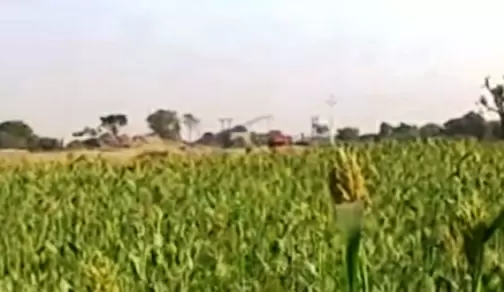A convergence between the academic world and the real world is the need of the hour
18-June-2016
Vol 7 | Issue 25
Once relegated to the status of "orphan crops", pulses and millets are currently a subject of tremendous interest among the global community. Pulse crops, millets and a host of other local cereals, vegetables, and fruits are of vital importance to the world's poor.
It is no surprise, therefore, that development agencies working in the area of agriculture -- like mine -- have moved beyond the traditional "stars" of food research - grains such as wheat, rice, and corn - and expanded the scope of its research around agriculture to include pulses and millets.
 |
|
Millets, including pulses, can play a key role in the fight against poverty
|
Remarkable progress has been made in decreasing the proportion of poor and hungry people globally over the past decade. However, feeding an estimated nine billion people with safe and nutritious food by the year 2050 remains a significant challenge for agricultural research, development, and policies -- especially given the obstacles of climate change, increased demand, and volatile prices.
To increase the sector's productivity and gradual transition towards economically viable small and medium-scale farming, particularly in South Asia and Africa, there is a great need to develop and scale up innovations specifically suited for the nearly 800 million small-scale farming families globally.
Food security is achieved, in part, through focussed and practical research. There is clear evidence that science and research can increase food supply and play a key role in the fight against poverty. According to the World Bank, agricultural growth is twice as effective at reducing poverty as non-agricultural growth because most of the world's poor live in rural areas.
This means that millets, including pulses, cannot be overlooked as these are part of the traditional diet of several developing regions of the world.
Over the past few months, at a number of conferences supported during the International Year of Pulses, the point has been brought home time and time again. In Canada, pulses were once a crop with low production and relatively minimal research attention. No longer. Advances in agricultural sciences and a vibrant international market have turned the Canadian pulse sector into a major world player.
Pulses are staple foods in many regions of the world. They diversify income and food sources for the poor in developing countries -- they are rich in micronutrients and serve as the key source of protein that is far more affordable than animal protein.
Many pulse crops grow well in dry conditions and can provide a hedge against the negative effects of climate change, a major concern in India and throughout South Asia. Pulses therefore have a relatively low "water footprint".
Despite the clear benefits of pulses, production remains stagnant. In some countries, including the ones where the population is growing fastest, and where pulses are consumed in the greatest quantities, pulse production is actually declining.
India has been the largest producer of pulses in the world. However, what is of concern is that India's per hectare yield has not increased in the past two decades. This is a key challenge for the pulse sector.
What is preventing farmers, especially small-holders growing crops on one-two hectares of land, from expanding production? What will it take to see voluntary uptake of these crops? How can the private sector become more involved? And where can research help?
At this juncture, a convergence between the academic world and the real world is the need of the hour. It is imperative to harness the power of both scientific and farmer-based knowledge in order to develop the right crops, tools, techniques and expertise for smallholder farmers and their communities.
Many smallholder farmers already have extensive knowledge of crop production as they have vast inherited knowledge. In many cases they simply need a boost to supplement their ongoing efforts -- this could include access to affordable technologies, to new techniques that have been proven in similar circumstances, or to markets and information.
Regrettably, there remains little plant research targeted to pulse crops in many Asian countries. This often results in farmers having difficulty finding good quality seed, coping with crop diseases and dealing with numerous challenges to maintain productivity.
The multi-pronged strategy to deal with this would need investment in research and on-the-ground solutions. One of the most critical needs is to find the fastest and most effective ways of taking research products to scale.
The challenge is great, but the opportunities are enormous. Most importantly, pulses are no longer orphan crops -- they have been adopted by the global community and it will not be long before results appear.
(Kevin Tiessen is a Senior Program Specialist at the Asia office of the International Development Research Centre - IDRC. The views expressed are personal.) - IANS














